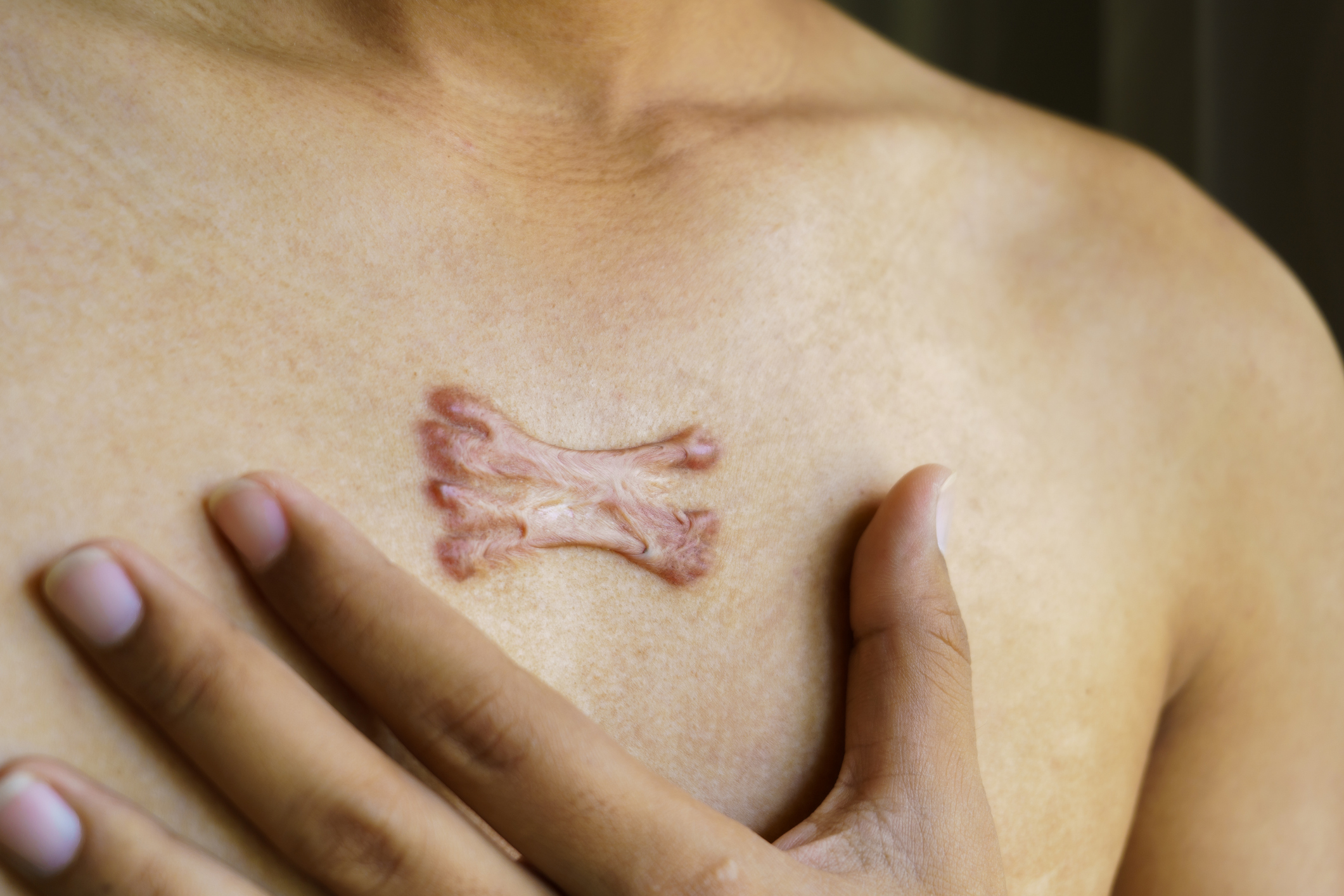Keloids are raised, thickened scars that can sometimes form after injuries, surgery, or even minor skin irritations that have been a cause of concern for many. They have distinct characteristics and often lead to physical and psychological discomfort. Fortunately, there are ways to minimize keloid formation. In this comprehensive guide, we will explore the causes and characteristics of keloids and delve into the strategies and preventive measures that can help you in your battle against these challenging scars. By understanding and applying these techniques, you can take proactive steps to reduce the risk of keloid formation and promote healthier, happier skin.
Keloids Explained
A. Definition and Distinguishing Keloids from Other Scars
Keloids are a distinct type of scar that varies significantly from more common scars. To better understand keloids, let's start with a clear definition and how to distinguish them from other scar types.
B. Keloid Formation Process
Keloid scars don't follow the typical path of healing that most scars do. Understanding how keloids form is vital to addressing their prevention.
C. Why Keloids are a Concern for Some Individuals
For many people, keloids are not just cosmetic concerns but can also pose physical and emotional challenges. Exploring why keloids are a significant concern for certain individuals sheds light on the importance of minimizing their formation.
Causes of Keloids
Genetics: A family history of keloids significantly increases the risk. If your parents or siblings have keloids, you may also be genetically predisposed to develop them.
Injury or Surgery: Any skin injury, including surgical incisions, cuts, burns, or acne, can lead to keloid formation. The severity and size of the injury can influence the likelihood of keloid development.
Skin Type: Individuals with darker skin tones, particularly people of African, Asian, or Hispanic descent, are more prone to keloid formation. The increased melanin in their skin may contribute to the excessive collagen production that characterizes keloids.
Hormones: Hormonal fluctuations, such as those that occur during pregnancy or as a result of hormone therapy, can affect skin healing and potentially trigger keloid development.
Age: While keloids can form at any age, they are more common in people between the ages of 10 and 30. Younger individuals tend to be at a higher risk.
Understanding these underlying causes is essential for anyone concerned about minimizing keloid formation.
Characteristics of Keloids
To effectively work towards minimizing keloid formation, it's crucial to recognize the characteristics that distinguish keloids from regular scars. Keloids exhibit several unique features:
Raised and Firm Texture: Keloids extend beyond the boundaries of the original wound, forming a raised and firm tissue mass. They often have a rubbery or hard texture.
Color Variations: Keloids can be pink, red, or darker than the surrounding skin. The color may change over time and with sun exposure.
Overgrowth: Unlike regular scars, which gradually fade and become less noticeable, keloids tend to grow over time. They can become larger and more prominent.
Itching and Pain: Keloids can be itchy and sometimes painful. This can be bothersome and affect a person's quality of life.
Spreading Beyond the Wound: Keloids extend beyond the borders of the initial injury. Their growth is unpredictable and can continue for weeks, months, or even years after the injury has healed.
Recurrence: Even if surgically removed, keloids are likely to return in the same area, sometimes more prominent than before.
Understanding the Prevention and Minimization of Keloids
Now that we've explored the characteristics of keloids, the next section will delve into strategies and treatments aimed at minimizing keloid formation and managing existing keloids effectively.
A. Techniques During Wound Healing
Appropriate Wound Care
Proper wound care practices play a fundamental role in minimizing keloid formation. Keeping the wound clean and following medical advice is crucial.
Suture and Closure Methods
Choosing suturing and closure techniques in wound management can significantly impact keloid formation. Exploring the most suitable methods can help reduce the risk of keloids.
Treating Skin Injuries Early
Addressing skin injuries promptly is a proactive approach to preventing keloids. Early intervention can make a substantial difference in the outcome.
The Role of Silicone Sheets and Gels
Silicone sheets and gels have gained recognition for their effectiveness in reducing keloid formation. Understanding how they work and their proper usage is key to prevention.
Corticosteroid Injections and Other Medical Interventions
Medical interventions, including corticosteroid injections, have been successful in preventing keloids. These approaches can be explored to minimize the risk of keloid formation.
Preventive Measures After Surgical Procedures
Post-surgical care is crucial in the prevention of keloids. Implementing preventive measures after surgical procedures can lead to more favorable outcomes, especially in individuals predisposed to keloid formation.
Lifestyle and Post-Care
Sun Protection and Scar Coverage
Protecting healing wounds and existing scars from harmful UV rays is essential in minimizing keloid formation. Sunscreen and scar coverage methods can help maintain scar integrity.
Avoiding Skin Irritation and Injury
Preventing skin irritation and injury in the areas prone to keloids is vital. Proper skin protection and care can reduce the likelihood of keloid development.
Diet and Nutrition for Skin Health
Nutrition plays a significant role in skin health. A balanced diet rich in essential nutrients can support the body's natural healing processes, potentially reducing the risk of keloids.
Support for Individuals with a Predisposition to Keloids
Individuals with a predisposition to keloid formation may require additional support and guidance. Access to medical professionals who specialize in keloid prevention and treatment can be invaluable in their efforts to minimize keloid formation.
Conclusion:
In the quest to understand and manage keloids, minimizing keloid formation is a pivotal goal. By comprehending the causes, characteristics, and various preventive strategies, individuals can take proactive steps to reduce the risk of keloid development. There are many avenues for minimizing keloid formation, from proper wound care and early intervention to silicone sheets, medical treatments, and lifestyle adjustments. This knowledge empowers individuals to make informed choices and embrace strategies that can promote healthier, keloid-free skin.



.webp)

.avif)